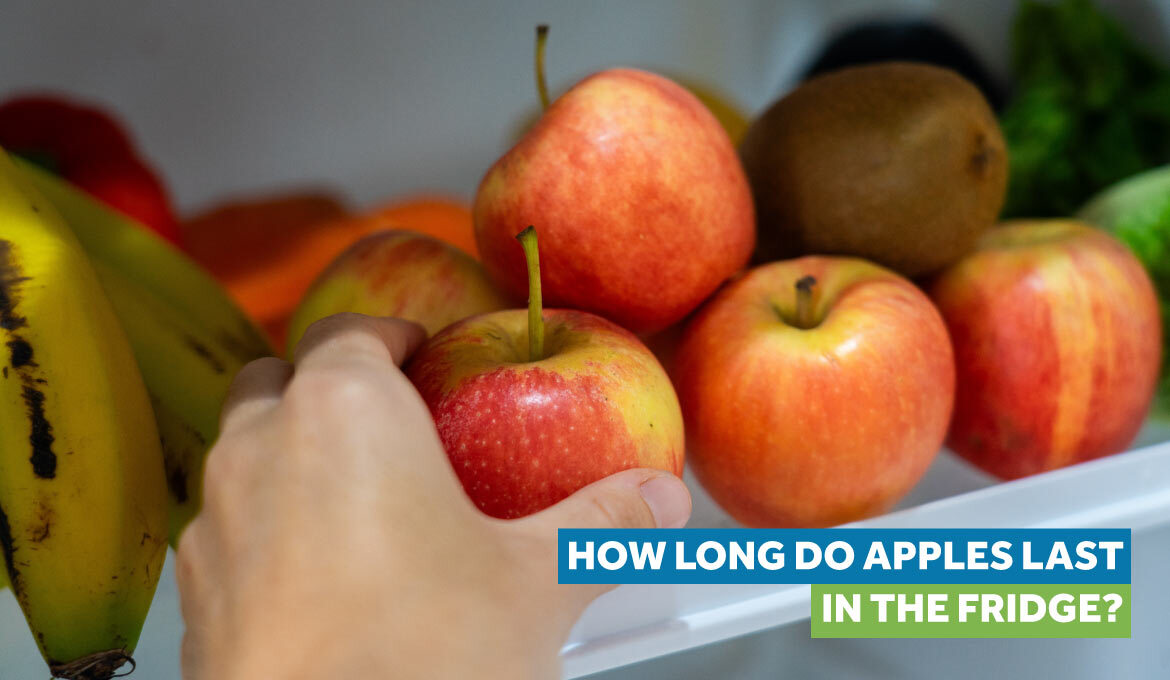
Have you ever made tuna salad and forgot to keep it in the fridge? Or if it's already in the fridge, you don't know if it's still safe to consume. But seriously, how long does tuna salad last in the fridge?
Tuna salad is a fancy dish that has been around for decades in America and across the world. It is mainly prepared with tuna and mayonnaise and topped with certain ingredients like pickles, herbs, eggs, and other seasonings.
As stated by foodsafety.gov, Tuna salad is edible for three to four days when properly kept in the fridge ( under 40°F), similar to other types of cold salads like potato salad, egg salad, etc.
This blog will address the question, “How long does tuna salad last in the fridge?” We'll also cover how to store it and make it last longer.
What is Tuna salad?
Tuna salad is a classic go-to for quick snacks and lunches. It is usually made with canned tuna and a few pantry staples like hard-boiled eggs, red onions, celery, mayonnaise, relish pickles, lemon juice, and a bit of spice.
Many of its ingredients contribute to spoilage, which is why storing it in the fridge is non-negotiable for preserving its freshness.
There are many incredible ways to serve tuna salad—it can be served with sandwiches, lettuce wraps, or stuffed avocado.
Is Tuna Salad Healthy?
Tuna salad is healthy if consumed in moderation. It is high in protein and omega-3 fatty acids plus low in fat and calories. But some people tend to go overboard on the mayo, adding tons of extra calories.
It can also be perfect for weight loss if made with light tuna packed in water rather than oil and a low-fat dressing or Greek yogurt in place of mayo.
Due to the high nutritional content of tuna salad, many health-conscious people consider it a part of a well-balanced diet.
But here's something people need to be aware of—the shelf life of tuna salad. You may develop food poisoning if your tuna salad has been left out at room temperature for too long. Let’s discuss this in more detail.
How Long Can You Leave Tuna Salad?
Generally speaking, Tuna salad must be kept in the fridge within two hours of making it, as stated by the United States Department of Agriculture (USDA) guidelines.
That means if you leave the tuna salad at room temperature, it will only be good for two hours. After that, it will turn bad, and you will need to throw it out.
This is because between 40°F and 140°F is the temperature range at which harmful bacteria, such as Staphylococcus aureus and E.coli, grow very quickly. This is commonly referred to as the “Danger Zone.”
It's no surprise that meat and poultry hotlines warn, “Never leave food out of refrigeration for more than two hours.”
How Long Does Tuna Salad Last In The Fridge?
Well, that depends on its storage conditions. For the most part, if stored in an airtight container, tuna salad can last for 3 to 5 days in the fridge.
- Fresh Tuna: If you're using fresh tuna for preparing tuna salad, you have only 2 days from the date of purchase, no matter when you made the tuna salad.
- Canned Tuna: If you're making tuna salad with canned tuna, it can last up to 3 days if stored in an airtight container in the fridge.
Make sure to use good quality, fresh ingredients like onions, mayo, or celery when preparing tuna salad. This way, you can extend the shelf life of your tuna salad, which may last for five days.
Please note that you can only eat the salad for up to 5 days. After that, it’s 100% spoiled and you must throw it out. If you eat it, you may get food poisoning, dehydration, diarrhea, or make you nauseous for days.
Also, make sure to label it with the date when it was kept in the fridge. This way, you'll know when the safe-to-eat period is up and won't accidentally eat spoiled food.
At What Temperature Should You Store Tuna Salad In The Fridge?
While storing in the refrigerator, you should also be mindful of the temperature you set in the fridge. As explained before, tuna salad must always be kept at or below 40°F, which is considered the optimal fridge temperature.
The reason behind this is that most bacteria grow and thrive at temperatures above 40 °F. These germs can overgrow and destroy your food in a couple of days or even hours! This caution applies to all kinds of meats, fish, and poultry.
Can You Freeze Tuna Salad?
You may be thinking about freezing tuna salad just like you would freeze other types of cold salad. But is it a good idea to freeze them? Not really.
Although it's possible to freeze, it is mostly not recommended. That’s simply because ingredients like mayo or herbs may not be able to freeze for longer (3 days).
On top of that, the taste and look of your salad will be affected badly. And you definitely do not want that.
This becomes highly problematic if you put lots and lots of mayonnaise in it. When the mayo freezes, the moisture might crack apart from the mayo itself and affect the salad’s texture.
But if you still want to experiment, try freezing a single scoop of salad for a couple of days and see how that goes. But again, chances are it won't taste that great.
So, better forget the idea of freezing your tuna salad if you prefer it to be fresh, delicious, and healthy!
How To Store Tuna Salad In The Fridge?
Knowing how to store foods, especially cold salad, is extremely important to maintain their taste and freshness and prevent bacterial growth. In fact, its shelf life also depends on proper storage.
So, considering its fresh ingredients, such as tuna, mayo, herbs, and tomatoes, it must be kept at cold temperatures. The sooner you keep it in the fridge, the fresher it stays.
The first thing you should do is to keep it in the fridge within 2 hours of making or purchasing it. Always store it in a well-fitting, airtight glass container to minimize exposure to air. If you have store-bought tuna salad, keeping it in the same container is best.
Place it where the temperature is stable and doesn’t fluctuate—at the back. Don't keep it near the door because it has poor temperature regulation and may frequently expose the salad to the outside temperature, even for a minute.
So put the container with tuna salad in the coldest part, i.e., on the back of the shelf.
Also, don't forget to check the “expiry” or “use by” dates of ingredients such as canned tuna or mayonnaise. Of Course, these may also affect the shelf life of your tuna salad.
How To Make Tuna Salad Last Longer?
Always remember the two-hour rule once you've made the tuna salad. When the temperature is 90°F or hotter, the window falls to one hour.
You don't want to keep food that will spoil outside the fridge for more than two hours. Anything above that risks bacterial development in your food. This risk is heightened by the heat in the room where you have placed the tuna salad.
If you wish to increase the shelf life of tuna salad, here are some useful tips:
i) Pick good quality and shelf-stable ingredients
Sometimes, you may have to throw your tuna salad earlier (before 3-4 days) for quality reasons. Yes, we're talking about its ingredients.
So, choose fresh and good-quality ingredients the next time you go grocery shopping. Double-check whether they are fresh and not close to spoiling themselves.
ii) Know how to store in the proper way
As with any salad, you should know how to store the leftover salad in the fridge correctly. Use an airtight container to store your tuna salad in the refrigerator.
A glass container is preferred to a plastic one. This way, bacteria, and unwanted particles will not enter the salad.
iii) Learn the way of dressing
If your dressing tends to separate, try to prepare and store the salad without dressing. Only add it prior to serving. This salad keeps its quality much longer.
Moreover, if you keep the salad without dressing in the fridge, you can also try healthier versions of your normal recipes.
For instance, you could reduce the quantity of mayonnaise and add some Greek yogurt instead. You could also try adding veggies or herbs instead of unhealthy options like pickles.
iv) Wrap and seal
If you're prepping the sandwich for later (say for a picnic or office lunch), gently cover it in plastic wrap or tin foil. This will keep the sandwich fresh and prevent the bread from collecting too much liquid.
v) Maintain hygiene
In order to keep your salad fresh and germ-free, it is important to prevent cross-contamination while making it.
Always keep your prep area clean, wash your vegetables, use clean and separate utensils, and regularly wash your hands to ward off the spread of germs.
vi) Sprinkle some lemon juice
As you may know, lemons are acidic and act as a natural preservative. If you add it to your salad, it may last longer, although the taste might change a bit. You may also add relish pickles.
Keeping the above tips in mind, you can prepare exactly as much as you need or make a little extra to safely enjoy a couple of days later.
How To Tell If Tuna Salad Has Gone Bad?
If you're in the dilemma of whether to keep or discard your tuna salad, how to know tell? It's simple – you have to look for changes in color, smell, taste, and texture.
Here are some noticeable signs that may help you decide:
i). Smell:
The first noticeable sign is the smell. Freshly made tuna salad usually has a mild, salty scent. If you sense a strong, funky, or unpleasant smell after you open your tuna salad container, it is likely spoiled.
But sometimes, there will be no smell. Just because the tuna salad has no foul smell does not mean it has not rotted or gone bad.
According to Tufts Now, many microorganisms that cause foodborne illnesses do not create an obvious odor when they begin to proliferate in food. So don't assume that the absence of foul odor means your salad is still safe to eat.
ii). Look:
The next thing is its appearance. As you may know, freshly prepared tuna salad has a thick, creamy texture. If your salad turns moldy and has brown, black, and green spots in some areas, it has turned terrible.
In addition, you may notice the ingredients have separated out, and there will be a pool of liquid. This sign is a 100% indication that tuna salad has to be thrown out.
iii). Consistency:
This is quite tricky to check. If you observe an unusual slimy, mushy, or muddy consistency, your tuna salad is likely spoiled and must be thrown out. This is a foolproof sign of bacterial growth.
iv). Timing:
Even if your tuna salad doesn't show any signs of smell, appearance, or consistency but has been kept in for over five days, it is unsafe to eat. You have no option but to discard it immediately.
Now, when it comes to throwing spoiled tuna salad, you must keep it in a sealed plastic container or bag and then put it in the garbage. Otherwise, the harmful bacteria will start to spread and contaminate the surrounding area.
Wrapping up!
We discussed everything about tuna salad and explained, “How long does tuna salad last in the fridge?” To sum up, tuna salad can stay fresh in the refrigerator for 3 to 5 days if stored in an airtight glass container—be it homemade or store-bought.
Do not let it sit out for more than 2 hours. Refrigerate it immediately within an hour of preparation. However, be sure to keep a stable temperature of 40 °F or below to prevent microbial growth in your salad.
Even if it looks tasty after 5 days, there's no sense of risking food poisoning with such spoiled salad. So, always check your tuna salad carefully.
Check for any funky smell or the presence of colored molds. If you’re unsure, just throw it. After all, it's better to be safe than sorry!
FAQs
1. How long is tuna with mayo good for in the fridge?
Ans: Tuna salad with mayo is good for up to 4 days before it begins to spoil.
2. Is tuna salad good after 5 days?
Ans: If tuna salad is kept properly in an airtight glass container in the fridge for five days from the date of prep, then it's good to go. But, if it has passed five days, it may get spoiled, and you need to toss it out.
3. How can you tell if tuna salad is spoiled?
Ans: If you notice any funky or foul smell, mold, or green or brown spots on your salad, it has spoiled. Also, if you see any change in consistency, like slimy consistency, the tuna salad has turned bad.
4. Can you eat a 3-day-old tuna sandwich?
Ans: No. You can not eat a sandwich that is three days old. If it's kept in the fridge for up to 24 hours, then it's safe to eat. Otherwise, for more than two days, your bread may turn mushy, or tuna may develop a weird smell.
5. Can you freeze tuna salad?
Ans: Yes, you can freeze tuna salad, but it's not always recommended. In fact, HHS has stated that it simply doesn't freeze well. This is because the mayo content may change the consistency and taste when it's thawed.
Read Also:















































